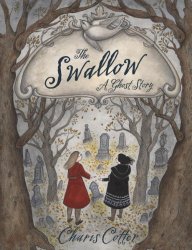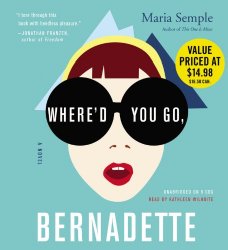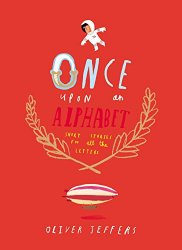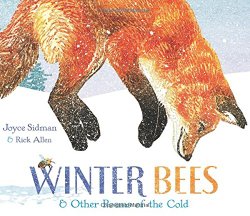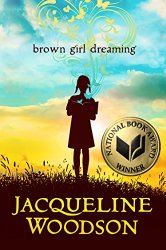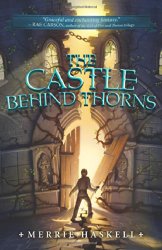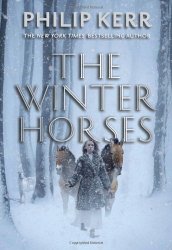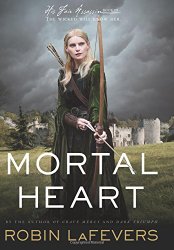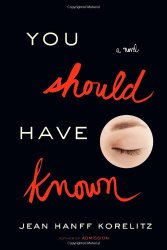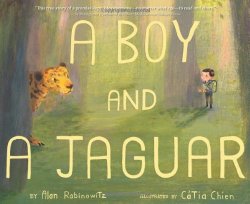Review of The Swallow, by Charis Cotter
A Ghost Story
by Charis Cotter
Tundra Books, 2014. 318 pages.
Starred Review
2014 Cybils Finalist, Speculative Fiction for Elementary and Middle Grades
2014 Sonderbooks Stand-out, #11 Children’s Fiction
I don’t think of myself as liking ghost stories, but this didn’t feel like a typical ghost story to me. This is a cozy friendship story and a girl-in-a-big-family-finding-a-friend story.
Sections in this book alternate between the voices of Polly and Rose. Their houses are next door to one another, and it turns out that their attics adjoin. The houses overlook the cemetery.
Rose has always been able to see ghosts, and she hates it. Polly has always wanted to see a ghost, and she isn’t sure that Rose isn’t one herself. She’s so pale and otherworldly.
Polly says:
I’ve always wanted to see a ghost. More than anything. I keep watch at my window for hours, I go for walks in the cemetery almost every day after school and I read all the ghost books I can find at the Parliament Street Library.
Rose says:
I never want to see a ghost again. I’m sick of it. Ladies all in white who follow me down the street, sad men in suits who sit at the back of the bus, children in nightgowns floating out hospital windows – I wish they would all disappear.
Rose hasn’t seen any ghosts, for some reason, since her hospital stay a few months ago. But then, when she hears Polly through the wall of her attic, she thinks they’re back. Polly, after hearing Rose’s voice, thinks she’s finally met a ghost.
Rose says,
I felt sick to my stomach. I was not used to invisible ghosts. And I certainly was not used to ghosts that talked so much. Especially out loud.
My heart sank. I hadn’t seen one ghost since I’d got home from the hospital, and I had really hoped they were gone forever. And now here was a ghost, right in my attic, in my own special nest. Where one came, the rest would follow, and I just knew I’d go stark raving mad if I couldn’t keep them away from me.
“Tell me,” said the ghost, “did you die a horrible death? Are you doomed to wander the ghostly regions between the land of the living and the life beyond?”
“Stop playing games,” I said. “You know I’m not a ghost. You’re the ghost, and you’re pretending to think I’m a ghost to drive me crazy. It isn’t going to work. Go away. All I want to do is sit in my attic and read my books and sing my songs in peace. Is that too much to ask?”
“Do ghosts read?” asked the ghost. “That’s very interesting. Do you have to turn the pages or can you sort of absorb the story by holding the book and pulling the words into your head?”
“I – am – not – a – ghost!” I said slowly and firmly. “Ghosts don’t read! They’re ethereal. They haunt people. They follow them down the street, they watch them when they’re doing their homework, they lurk behind gravestones, they hide in people’s attics –“
“For someone who says they’re not a ghost, you seem to know an awful lot about them,” said the ghost.
I opened my mouth but no words came out. This was the most infuriating ghost I had ever met.
I love the part – in the next chapter – where they figure out what’s actually going on. Rose had gotten frustrated and shouted out, “MY NAME IS ROSE MCPHERSON AND I LIVE AT 43 CEMETERY LANE AND I AM TWELVE YEARS OLD AND I AM NOT DEAD!”
She continues:
It felt good to lose my temper. I made a lot of noise, but the ghost didn’t seem at all put out.
“Wait. Where did you say you live?” she asked calmly.
“43 CEMETERY LANE!” I repeated.
Silence.
“Hit the wall again,” suggested the ghost.
THUMP.
“Umm . . . Ghost?” she said.
“My name is Rose!”
“Ummm . . . Rose?” she said.
“What?”
“I live at 41 Cemetery Lane. Next door.”
It took me a minute to figure it out. “You mean you’re in your own attic? On the other side of the wall?”
“Yes,” replied the ghost. “I guess you’re not a ghost after all.” She sounded disappointed.
“But why is it I can hear you so clearly?” I asked. “As if you were right here beside me?”
“I am right here beside you,” she said, starting to tap against the wall. “This wall must be really thin, not like the brick wall downstairs.”
“That must be it,” I said. A great feeling of relief swept over me and I spoke without thinking. “So you’re not a ghost either. You must be one of the dreadful Lacey children who live next door.”
“Who says we’re dreadful?” asked the girl.
Oops. “Um – my mother.”
“Oh,” said the girl. “Well – she’s right. We are.”
The girls agree to meet in the cemetery – and then find a grave with Rose’s name on it. Rose is convinced she’s not a ghost, but who is Winnifred Rose McPherson, who died at twelve years old, 40 years earlier?
The girls build a friendship. They research this other ghost. And then they find a way to go secretly into each other’s attics. But Rose’s home does have a ghost – and she’s angry, and doesn’t seem to want Polly to go into her attic.
This book is indeed a ghost story – but it’s also a friendship story, and a story that warmed my heart, despite the ghostly chill.
chariscotter.com
tundrabooks.com
Find this review on Sonderbooks at: www.sonderbooks.com/Childrens_Fiction/swallow.html
Disclosure: I am an Amazon Affiliate, and will earn a small percentage if you order a book on Amazon after clicking through from my site.
Source: This review is based on a book sent to me by the publisher to evaluate for the Cybils Awards.
Disclaimer: I am a professional librarian, but I maintain my website and blogs on my own time. The views expressed are solely my own, and in no way represent the official views of my employer or of any committee or group of which I am part.
Please use the comments if you’ve read the book and want to discuss spoilers!
